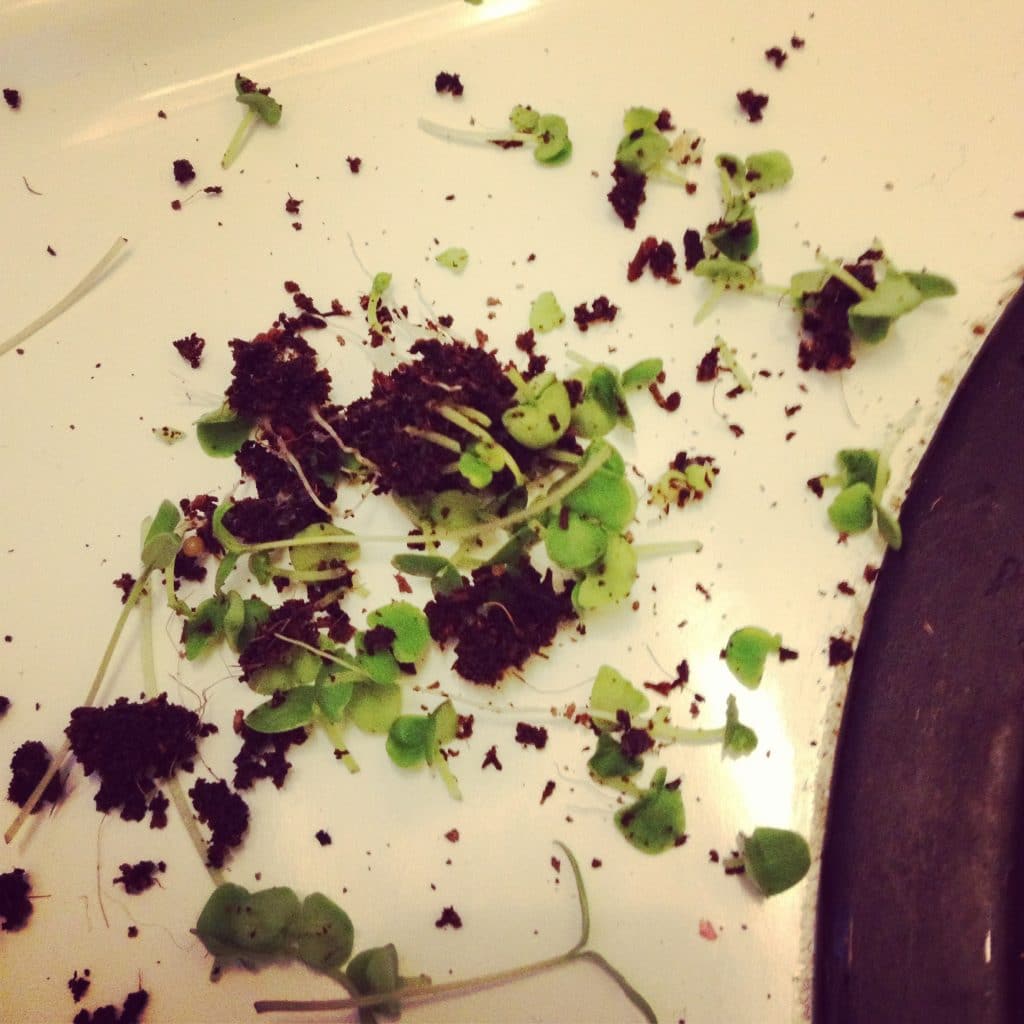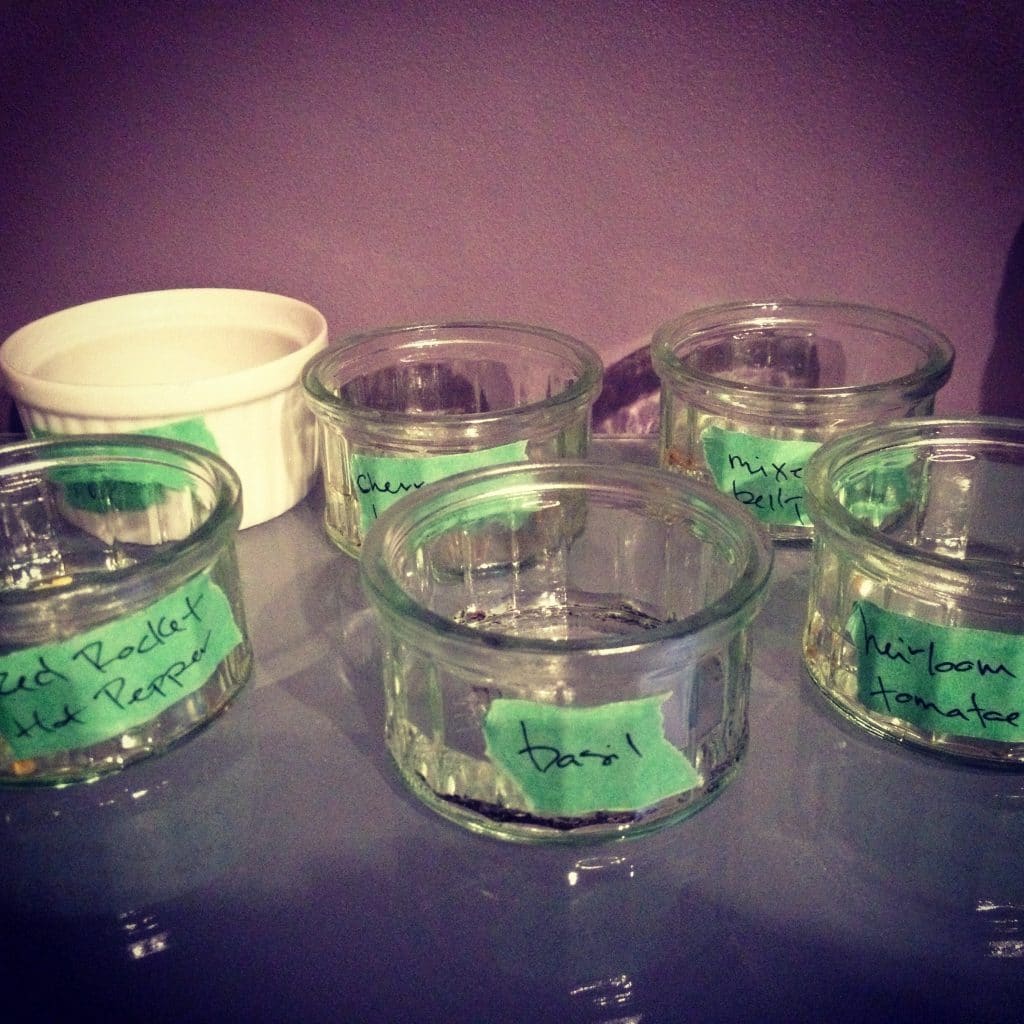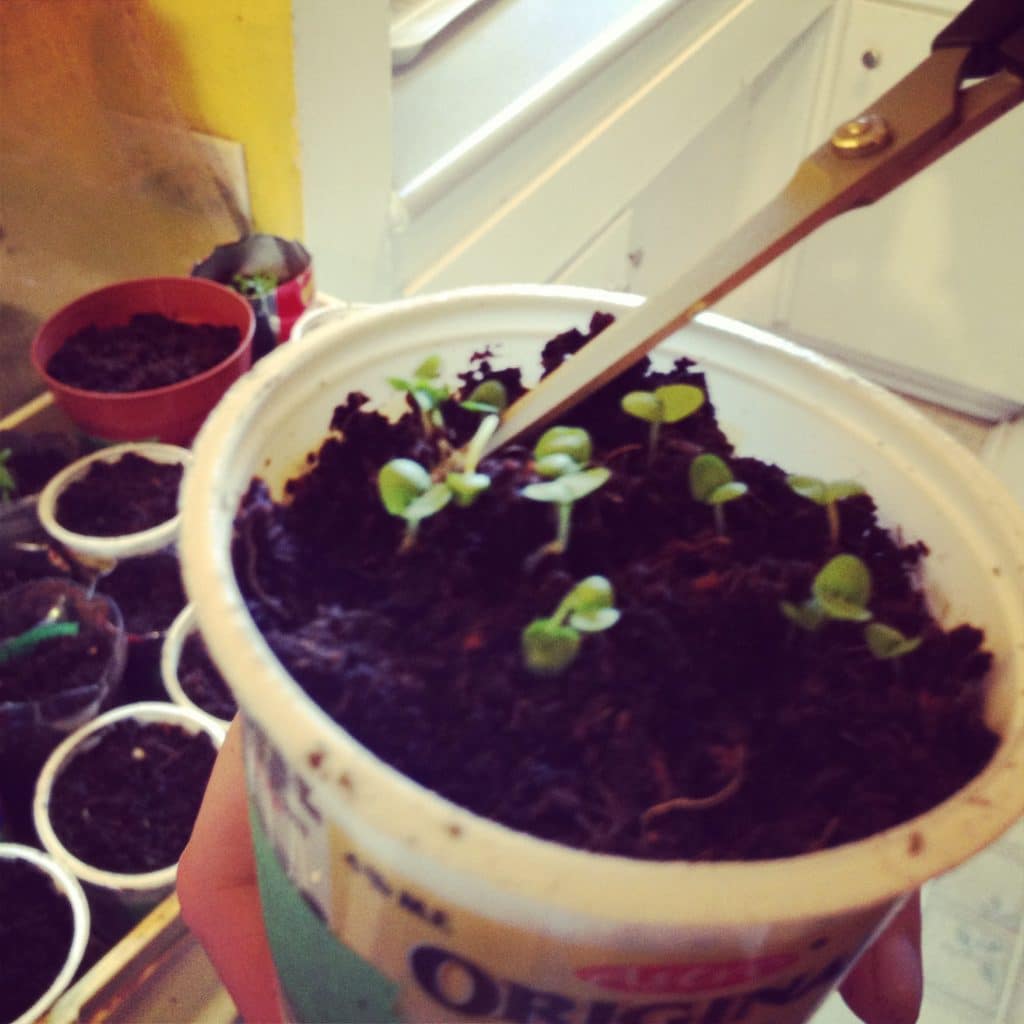
I’m a beginner gardener, and trying to do things perfectly intimidates and even discourages me. I do take the basics seriously, but if I want to try planting sedum as a groundcover in a poorly drained area, well, I’m just going to try it, okay? (That experiment didn’t work out. But I vow to find another use for beautiful sedum somewhere – with better drainage – in my garden.)
It’s with this attitude that I started seeds indoors for the first time. I read through Garden Making’s seed-starting guide, decided I could follow most of the rules, and got the necessary equipment. I’m using a grow light borrowed from a friend, some thoroughly cleaned yogurt containers and pop cans with holes punched in the bottom, and a soilless mix that is airy and retains water.
The top of my refrigerator ended up being the only suitable place for starting seed in my apartment, because it’s out of the way and tall enough to be close to where I hung the light. Also, my cats are less likely to sabotage them up there. It’s not going to provide a heat source to the bottom of the seed trays, which I know is ideal when starting seeds indoors, but it will do.

I created a little page in my gardening journal for each plant with the date they were started, and left space to keep track of each plant’s progress. I decided to experiment by soaking some seeds overnight to see if it made a difference as to when they sprouted. It turns out it did for the cherry tomatoes, basil and snapdragons – they sprouted about a day earlier than those that weren’t soaked.
I’m leaving the light on from about 8 a.m. to 10 p.m. every day, watering from the bottom (in the trays that don’t leak) and keeping track of their progress. To thin the seedlings, I’m cutting off the sprouts just above soil level (pulling them out might disturb the roots of the ones left in place). My aim is to get one healthy seedling in each container to eventually transplant to a larger pot.
I may not being doing it by the book exactly, but I’m having fun and will hopefully get some seedlings that can be transplanted later this spring. Experimenting is a big part of any gardening education, and if I make a gardening faux pas while starting seeds indoors, I’m okay with that.









